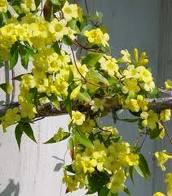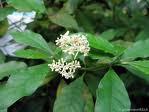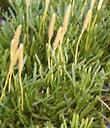HOMEOPATHY
is a 200 plus year old system of therapeutics based on the natural law, known as far back as Hippocrates 500BC, called the Law of Similars – ie “what a substance can cause, it can also cure.”
Homoeopathy requires the selection of a remedy. These remedies are greatly diluted & potentised, from substances which through prior testing on healthy people and from clinical experience & observation are known to be capable of producing symptoms similar to those presenting in the patient. The selection of this remedy will entail the documentation of a comprehensive patient history so please be aware that your first visit may be lengthy while this information is acquired.
Alternatively you can read the patient
Life History format brochure or Childrens Life History format Brochure (see Links page) and write out your life history and email it to me before your first visit so that I can have time to read and collate the information and prepare my questioning.
**To go automatically to the links page press
Aloe


 Gelsemium
Gelsemium
The approach to health is wholistic in that the patient is treated in all spheres – mentally, emotionally and physically. The system recognises that all symptoms of ill health are signs of disharmony within the whole person and that it is the person who needs the treatment and not the disease.
Different people react in different ways to the same illness. Think about how many ways the members of one family can react to the same ‘flu’. There is therefore, no one remedy for the ‘flu’. The remedy selection depends upon the personal, individual presentation of symptoms.ie 'taking the case'.
Homoeopathy is an effective and scientific method of healing which helps the natural tendency of the body to heal itself. Homoeopathy recognizes that all symptoms of ill health are signs
of the disharmony within the whole person and that it is the person who needs the treatment, not the disease.
Homoeopathic remedies rarely cause side effects and you cannot
become addicted to them. This is because only a very minute
amount of the active ingredient is used in a specially
prepared form. This remedy is always tailor-made for your need
How does it work?
Homoeopathic remedies work by stimulating the body’s own healing power. This power is very great and many complaints heal themselves unaided, but when the healing process is faulty, blocked or slow, then the Homoeopathic remedy acts to stimulate the curative powers of the body. To provide this stimulus your Homoeopath must prescribe the right remedy for you.
What will the treatments be like & what do I have to do?
Your Homoeopath will give a remedy in the form of pills or drops which are placed under the
tongue and held there for 2 minutes, before swallowing. Nothing else should be put in the
mouth for 20 minutes before or after taking the remedy, not even toothpaste or cigarettes.
Your Homoeopath will advise you not to use eucalyptus oil, camphor or menthol or expose your medicine to these or other strong smelling substances as this would spoil the effect of the remedy. Direct sunlight or strong heat will also destroy the effectiveness of your medicine. For the same reason you will be asked about any other medications you are taking – including supplements, vitamins and other herbal substances. Please tell us about all medicines you are taking, including headache tablets or sinus sprays, or if you are undergoing dental treatment. If you are given a homoeopathic remedy to take at a later date, store the bottle in a cool dark place away from anything with a strong smell (not in the fridge). It is advisable to keep them out of the reach of children. Your Homeopath may ask you to make some changes i your diet or habits if your recovery would be helped by doing so. However, the motto is ‘All good things in moderation'.
Mercury
A Homoeopath can treat on several levels:
Acute: Remedies that relieve acute illness or acute exacerbations of chronic complaints.
Chronic: Chronic conditions that are either there all the time or come and go
Constitutional: Treatment of the patient as a whole, and in doing so, raising their general health & well being while minimising their acute episodes of ill health.
Miasmatic: Treatment of family propensities to certain disease patterns to lessen the cyclic effects of chronic complaints.
HISTORY OF HOMEOPATHY IN AUSTRALIA
(Taken from the National Competency Standards for Homeopathy )
Homoeopathy has been practiced in Australia for over 140 years and the present movement towards the adoption of national competency standards is best understood within the context of that history. It is a very significant step for both self-regulation of the profession and in gaining greater public acceptance of the contribution that homoeopathy can make to health care.
The adoption of national competency standards will not, however, be the first important form of recognition received by homoeopathy in this country.
Throughout its 200 year continuous existence world wide,
homoeopathy has experienced periods of both support and
opposition from the medical establishment, and recognition
from governments (eg. Since its inception in 1948,
homoeopathy has been part of the National Health Service
in Great Britain). Even when attacked or threatened with
obscurity, there has always been a small, dedicated band
of practitioners who have kept Homoeopathy alive. Australia Ipecacuahna
has been no exception to this experience.
In Melbourne and Sydney, homoeopathy was formally introduced through Homeopathic Dispensaries, set up initially to help the poor and the sick. The energy of those involved resulted in the establishment of a Homeopathic hospital in each city – Melbourne in 1882 and Sydney in 1901. The Governor of Victoria laid the foundation stone of the Melbourne Hospital. The success of the ventures is evidenced by the treatment of 100,000 cases in the Melbourne dispensary and Hospital over a 25 year period up to 1901.
Financing in both cities was largely by public subscription and bequests. The conventionally trained doctors embraced Homoeopathy as their preferred mode of treatment and patient care, yet the number of doctors available was always small.
Homeopathy was also practiced in Brisbane and Hobart from the mid nineteenth century onwards and journals such as “The Australian Homoeopathic Progress” (written for the public) and “Australian Homoeopathic Medical Gazette” (written for professional homoeopaths) appeared during the last quarter of the nineteenth century. In South Australia homoeopathy was practiced from the time of first European settlement and was initially concentrated in the areas settled by German immigrants.
By World War II , homoeopathy was declining within the official environment, and this decline was hastened by the advent of anti-biotics. A very small number of individual doctors continued to provide homeopathic treatment, but there was little interest within the medical profession in sustaining homoeopathy’s


 contribution to health care.
contribution to health care.
Mag Phos
The role of the professional homoeopath now became crucial. Small numbers of such practitioners continued to practice throughout Australia, especially in the capital cities, and homeopathy became increasingly associated with the concept of natural therapies.
With regard to training and education in homoeopathy, the majority of these practitioners were self taught and some had received training overseas. Their continued existence is testimony to their success as practitioners.
This success led to small numbers of people wanting to receive training in homeopathy and a few practitioners began to offer courses. There were, of course, neither common standards nor avenues of registration, and emerging courses and colleges depended upon personal levels of integrity and professional attitudes to ensure that reasonable standards were set.
During the 1980’s, standards of homeopathic practice and education continued to improve and, within the last decade, homeopathy began receiving forms of government recognition. This included accreditation of homoeopathy courses by the Vocational & Education Training sector consequence financial assistance (ie. Austudy/abstudy) became available to students.
Another form of recognition has been the decision by a number of Health Funds to offer rebates for homeopathic consultations if the practitioner is a professional member of the homeopathic or naturopathic association.
Further Recognition comes from the growing links between existing homoeopathy and natural therapies colleges with the university and TAFE systems and the development of degree courses by private training providers. Examples are:
• The Bachelor degree in homoeopathy offered by the Australian College of Natural Medicine in Brisbane and the Melbourne College of Natural Medicine
The Bachelor degree in homoeopathy offered by the Australian College of Natural Medicine in Brisbane and the Melbourne College of Natural Medicine
• The advanced Diploma in Homeopathy offered through the Queensland TAFE system and other private training providers
The advanced Diploma in Homeopathy offered through the Queensland TAFE system and other private training providers
• The homoeopathic units at Southern Cross University’s Naturopathy degree
The homoeopathic units at Southern Cross University’s Naturopathy degree
Many training providers are also negotiating cooperative teaching arrangements with universities.
It has been necessary to provide this brief historical background
to highlight the nature and degree of recognition already received
by homoeopathy in Australia and, in so doing, to appreciate the
significance of the development of the National Competency
Standards for Homoeopathy.
The endorsement of the National Competency Standards for
Homeopathy will ensure a common standard of practice across  Lycopodium
Lycopodium
Australia, play a key role in the development of a national register
of practitioners, and ensure consistency in the provision of homeopathic education.
Most homoeopaths practicing in Australia are professionals who have trained outside the conventional medical system. However it is significant that both the PMC and the ICAHS have included representatives from the Australian Medical Faculty of Homeopathy.
It is also significant that the development of the National Competency Standards for Homeopathy has been initiated, funded and driven by homoeopaths, rather than by training providers or other stakeholders.
Despite diversity in philosophical interpretation and consequent emphasis in practice, it has been possible for the profession to unite for the purpose of developing competency standards. The endorsement of the National Competency Standards for Homeopathy is a significant step towards recognition of homoeopathy and reflects a maturing of the profession in Australia.
MALENY HOMEOPATHY
& Allied Natural Therapies
HOMEOPATHY








